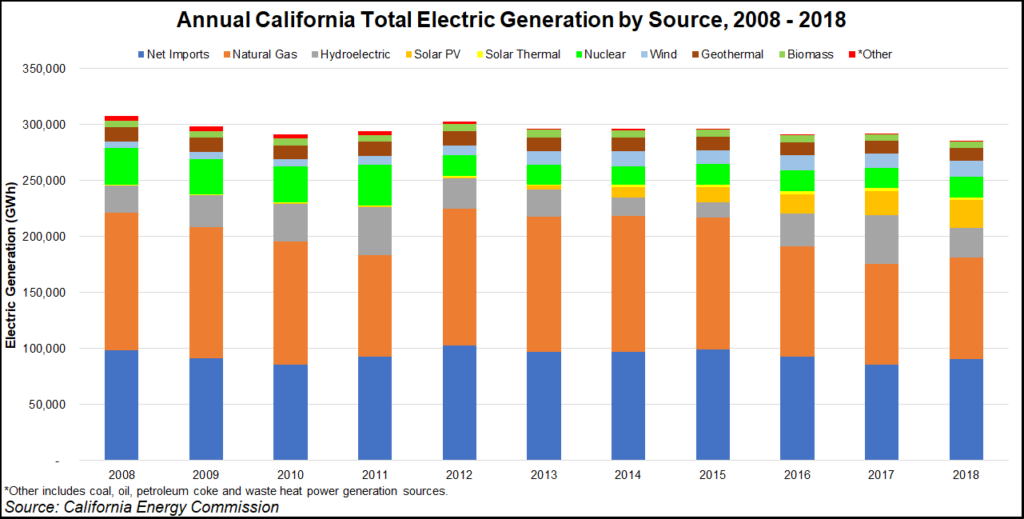Regulatory | NGI All News Access | NGI The Weekly Gas Market Report
California Regulators Assert Natural Gas Still Power Gen Necessity
The California Public Utilities Commission (CPUC) on Thursday rolled out a grid reliability proposal it will vote on next month that includes continued, albeit decreasing, reliance on natural gas for electric generation through the early 2020s.

According to CPUC, the proposal would allow California to make progress toward power grid decarbonization by 2045. In the meantime, however, the proposal would direct investor-owned utilities to deploy an “all-source” approach to thee generation mix, with more battery storage, demand response, efficiency and renewables, along with existing gas-fired generation.
“Deploying renewable energy and battery storage, as well as gas-fired generation, to meet reliability needs identified by the CPUC and stakeholders will advance California toward a low-carbon, reliable future,” regulators said.
CPUC’s Liane Randolph, lead commissioner for long-range and reliability planning, said the panel is “managing unprecedented energy market conditions in California that inform the steps we are taking today.”
The ultimate goal is to eliminate the use of fossil fuels for power generation, but the commissioners recognize that for reliability and diversity reasons gas-fired generation has to remain part of the mix.
The proposal recommends extending the planned retirement dates for several coastal, gas-fired plants slated to close at the end of this year, some of the 19 seawater-cooled plants identified for closure a decade ago.
“The CPUC is committed to retiring these facilities,” it said, but it wants the extensions “to ensure the reliable operation of the grid until the new resources ordered in this decision can be brought online,” said spokesperson Julie Hall.
Continuing to operate the gas-fired plants would be mitigated as they typically only operate during peak loads. Thus, the overall emissions levels and use of seawater for cooling are kept low, Hall said.
© 2024 Natural Gas Intelligence. All rights reserved.
ISSN © 1532-1231 | ISSN © 2577-9877 | ISSN © 1532-1266 |
